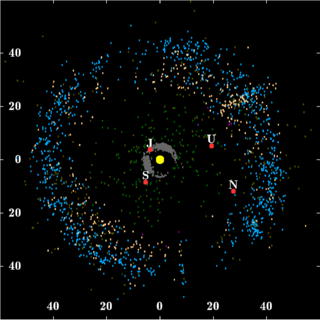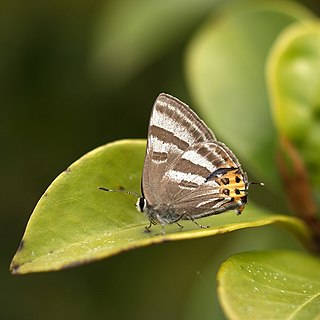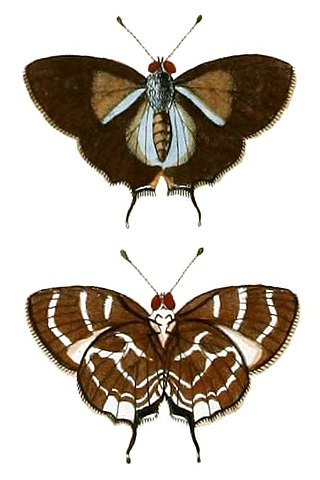
A centaur, occasionally hippocentaur, also called Ixionidae, is a creature from Greek mythology with the upper body of a human and the lower body and legs of a horse that was said to live in the mountains of Thessaly. In one version of the myth, the centaurs were named after Centaurus, and, through his brother Lapithes, were kin to the legendary tribe of the Lapiths.

In planetary astronomy, a centaur is a small Solar System body with either a perihelion or a semi-major axis between those of the outer planets. Centaurs generally have unstable orbits because they cross or have crossed the orbits of one or more of the giant planets; almost all their orbits have dynamic lifetimes of only a few million years, but there is one known centaur, 514107 Kaʻepaokaʻawela, which may be in a stable orbit. Centaurs typically exhibit the characteristics of both asteroids and comets. They are named after the mythological centaurs that were a mixture of horse and human. Observational bias toward large objects makes determination of the total centaur population difficult. Estimates for the number of centaurs in the Solar System more than 1 km in diameter range from as low as 44,000 to more than 10,000,000.
8405 Asbolus is a centaur orbiting in the outer Solar System between the orbits of Jupiter and Neptune. It was discovered on 5 April 1995, by James Scotti and Robert Jedicke of Spacewatch (credited) at Kitt Peak Observatory in Arizona, United States. It is named after Asbolus, a centaur in Greek mythology and measures approximately 80 kilometers in diameter.
Lucius Tiberius is a Western Roman procurator or emperor from Arthurian legend, who is killed in a war against King Arthur. First appearing in Geoffrey of Monmouth's Historia Regum Britanniae, Lucius also appears in later, particularly English literature such as the Alliterative Morte Arthure and Thomas Malory's Le Morte d'Arthur. The motif of a Roman Emperor defeated by Arthur appears in the Old French literature as well, notably in the Vulgate Cycle.

The Deudorigini are a tribe of butterflies in the family Lycaenidae.

32532 Thereus, provisional designation: 2001 PT13, is a centaur from the outer Solar System, approximately 80 kilometers (50 miles) in diameter. It was discovered on 9 August 2001, by astronomers of the Near-Earth Asteroid Tracking program at the Palomar Observatory in California, United States. This minor planet was named for the phrase thēreios bia 'beastly strength', used to describe centaurs in Greek mythology.

Thereus is a genus of gossamer-winged butterflies. Among these, it belongs belong to the tribe Eumaeini of the subfamily Theclinae. These small butterflies occur essentially all over the Neotropics.

Thereus orasus is a species of butterfly of the family Lycaenidae. It occurs in montane habitats from central Mexico to those of western Panama (Chiriquí) at elevations from 1,100 to 1,800 meters.

Thereus lomalarga is a species of butterfly of the family Lycaenidae. It is found from Costa Rica to the western slope of the Andes in Ecuador. It occurs in the great variety of forested habitats.

Thereus oppia is a species of butterfly of the family Lycaenidae. It is found from Mexico to Costa Rica at a variety of elevations. Most localities where it occurs appear to be deciduous dry forest.

Thereus pedusa is a species of butterfly of the family Lycaenidae. It is found from Nicaragua to Brazil and Suriname.

Giuliano Di Baldassarre is a Professor of Hydrology at Uppsala University and the Director of the Centre of Natural Hazards and Disaster Science, Sweden. He was awarded the American Geophysical Union Whiterspoon Lecture in 2020 and the European Geosciences Union Plinius Medal in 2021.









